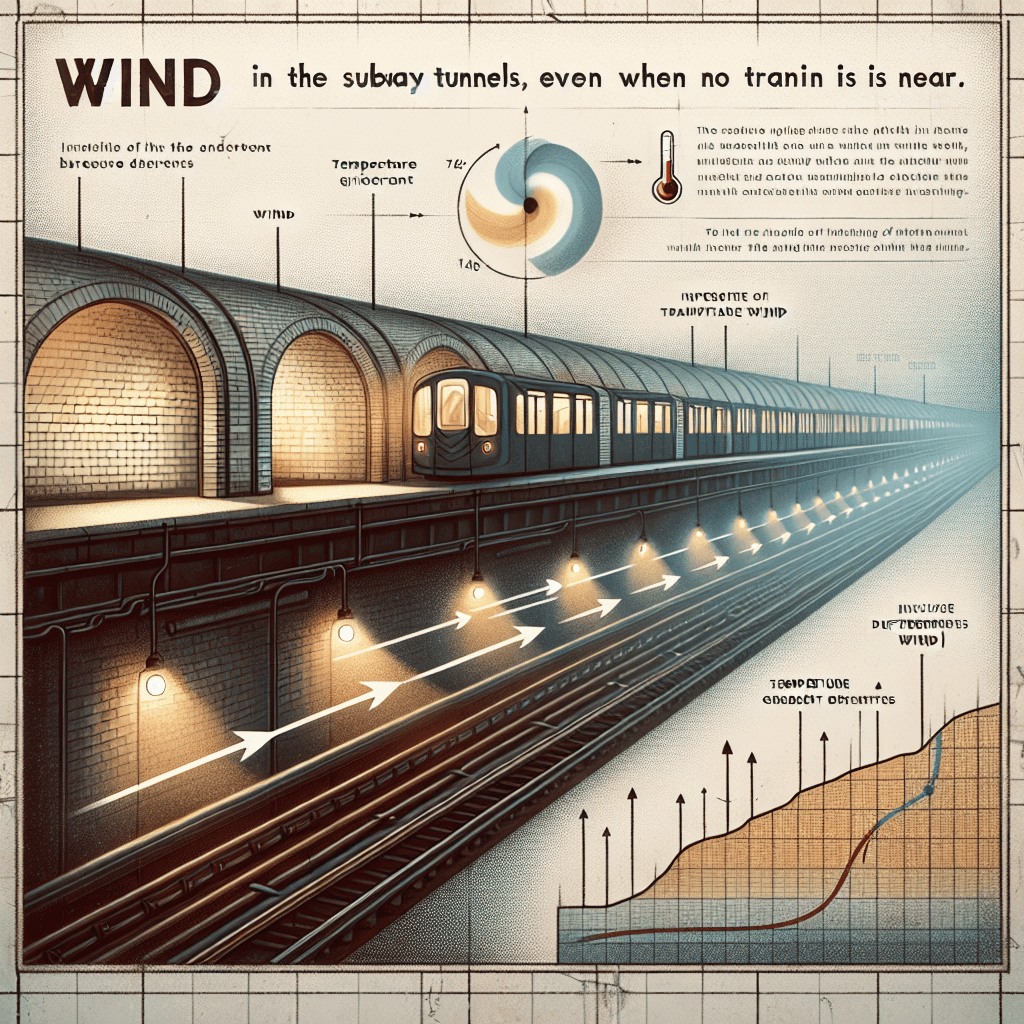Why are subway tunnels often gusty with wind even when no train is near
Ever felt that powerful gust of wind on a quiet subway platform and wondered where it came from? It’s not a ghost train—it's the tunnel itself breathing, and the reason why is a fascinating piece of hidden engineering.


Too Long; Didn't Read
TLDR: Massive ventilation fans are always running to circulate air, and the temperature difference between the warm tunnels and the cooler surface creates a natural chimney effect, causing constant airflow.
Title: The Phantom Wind: Why Are Subway Tunnels Often Gusty with Wind Even When No Train Is Near?
Introduction
Ever stood on a subway platform, watched the departure board show the next train is minutes away, yet felt a sudden, powerful gust of wind rush past you? It’s a common, slightly mysterious urban experience. You might glance down the dark tunnel, expecting to see headlights, only to find nothing. This "phantom wind" isn't a ghost in the machine; it's the result of a fascinating interplay between physics, engineering, and the very design of the subterranean world beneath our feet. This blog post will demystify this phenomenon, exploring the three primary forces that keep the air moving in subway systems, ensuring that even a seemingly empty tunnel is a dynamic and breezy environment.
The Lingering Ghost: The Piston Effect
The most well-known cause of wind in a subway is the "piston effect," but its reach is far greater than you might think. When a train moves through a tight-fitting tunnel, it acts just like a piston in a cylinder. It shoves a massive column of air in front of it, creating a high-pressure zone that results in a strong gust on the platform as it arrives. Conversely, it leaves a low-pressure vacuum in its wake, pulling air behind it.
However, this effect isn't just localized to the train's immediate vicinity. A modern subway system is a complex, interconnected network of tunnels. The air pushed by a train several miles away has to go somewhere. This pressure wave travels through the network, forcing air through ventilation shafts, connecting tunnels, and eventually onto other station platforms. So, the gust you feel on a quiet platform could be the "ghost" of a train that is still several stops away, its pressure wave arriving long before its sound or lights.
The System's Lungs: Mechanical Ventilation
Subway tunnels aren't just passive tubes; they are actively managed environments with powerful mechanical "lungs." Massive fan systems are constantly at work, and they are one of the primary reasons for the persistent airflow you feel, regardless of train traffic. These ventilation systems serve several critical purposes:
- Air Quality: They circulate fresh air from the surface, pushing out pollutants like brake dust, carbon dioxide exhaled by thousands of commuters, and other stale air.
- Temperature Control: Trains generate an immense amount of heat from their motors, braking systems, and air conditioning units. Combined with the body heat from passengers, this can quickly raise temperatures to uncomfortable or even unsafe levels. Ventilation is crucial for dissipating this heat. In fact, studies of the London Underground have shown that a significant portion of its heat comes from the clay soil, which has been slowly warmed by the transit system for over a century.
- Emergency Management: In the event of a fire, these fans are designed to extract smoke, clearing escape routes and improving visibility for first responders.
These fans are often running 24/7 or on automated schedules, creating a steady, noticeable breeze that is entirely independent of any train movement.
Nature's Air Conditioner: The Stack Effect
Finally, a natural phenomenon known as the "stack effect" or "chimney effect" contributes to the constant air movement. This process is driven by simple thermodynamics. Underground tunnels are typically warmer than the surface air, especially during cooler seasons, due to heat from trains, lighting, and the surrounding earth.
Because warm air is less dense than cool air, it naturally rises. This warm air travels up through stairwells, elevator shafts, and ventilation outlets to the street level. As it exits, it creates a low-pressure area in the lower parts of the subway system. To equalize this pressure, cooler, denser air from the surface is drawn down into the system through station entrances. This creates a continuous, natural convection cycle—warm air out, cool air in—resulting in the gentle but persistent draft you often feel near escalators and station entrances.
Conclusion
The gusty winds of the subway are far from mysterious. They are the tangible result of a dynamic system working as intended. That breeze you feel on a quiet platform is a combination of the far-reaching piston effect of a distant train, the vital work of massive ventilation fans keeping the air safe and breathable, and the natural thermal engine of the stack effect. The next time you feel that unexpected rush of air in the subterranean quiet, you'll know it’s not a phantom, but simply the complex, invisible machinery of a city breathing all around you, keeping the network alive and moving.
More Articles

What creates the warm crackle sound unique to vinyl records?
That iconic warm crackle is more than just dust and nostalgia—it's the sound of a microscopic story of friction and physics being told in real-time.

Why do some insects build and wear a backpack made from the corpses of their victims?
For some of nature's tiniest predators, the best defense is a grisly offense—building a protective shield from the corpses of their vanquished prey.

Why are Earth's deserts not random, but aligned in two distinct belts?
It’s not a coincidence that the world's great deserts are aligned in two perfect bands; they are the direct creation of massive, invisible rivers of air that perpetually circle the globe.